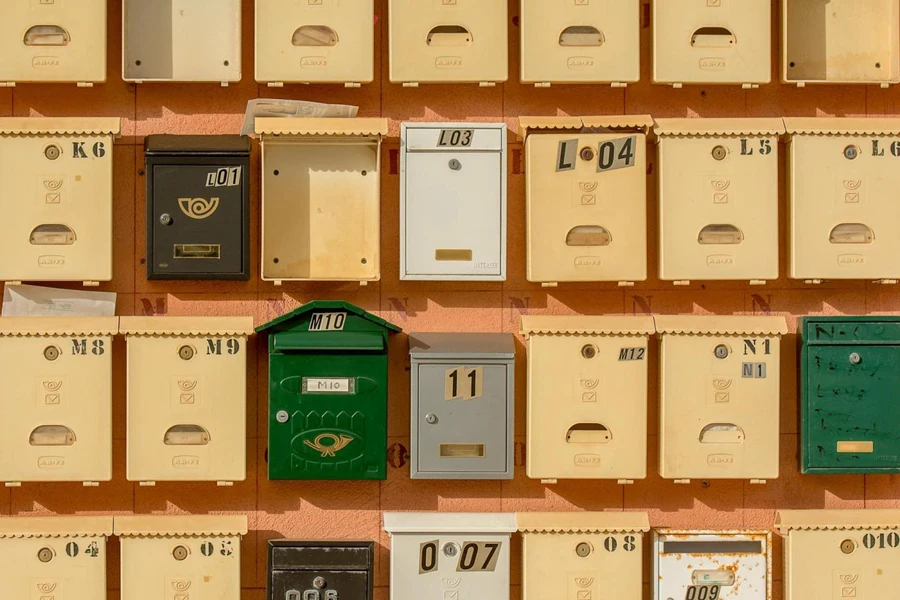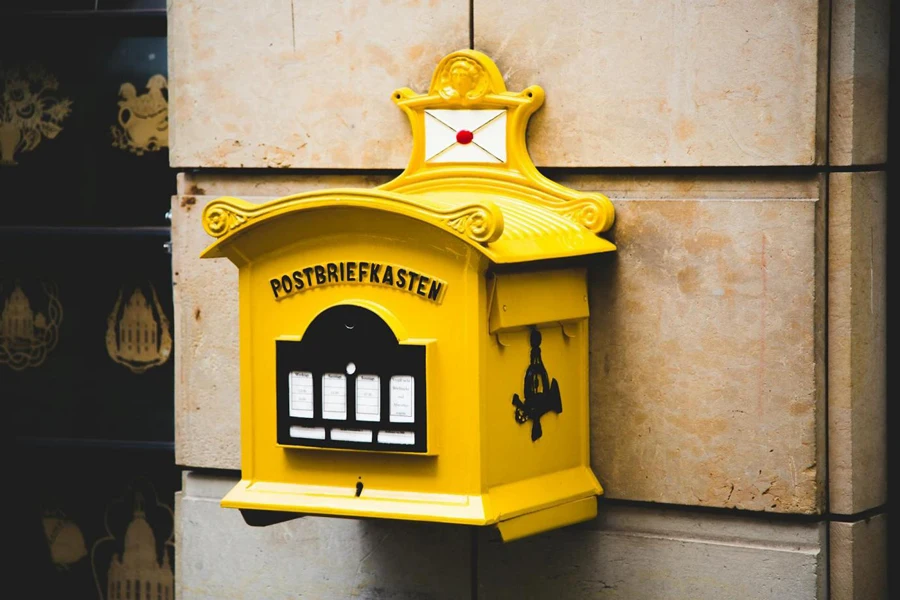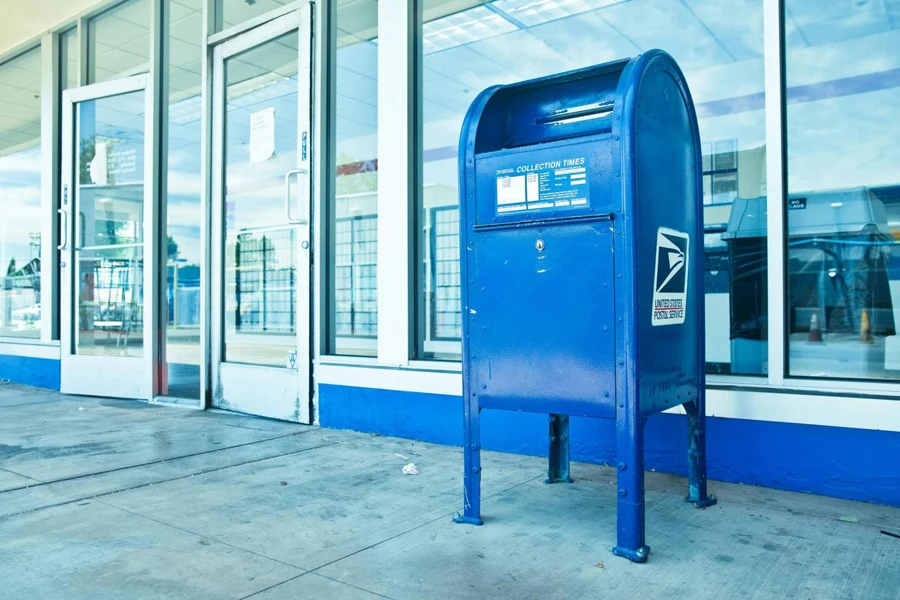Table of Contents
● Introduction
● Market overview
● Key design and material innovations
● Top sellers driving market trends
● Conclusion
Introduction
The residential mailbox market is rapidly evolving, driven by technological advancements and shifting consumer demands for enhanced security and convenience. With the rise of e-commerce and the increasing need for secure package delivery, innovative mailbox designs are becoming essential for modern households. This article delves into the market dynamics, examining the growth trends and key innovations in design and materials that are shaping the industry. We will also highlight the top sellers who are driving these trends, ensuring you stay informed about the latest developments. Explore how these advancements are revolutionizing residential mailboxes and what the future holds for this indispensable household feature.

Market overview
The residential mailbox market is poised for substantial growth, with projections indicating a rise from $139 million in 2022 to $185.6 million by 2029, driven by a compound annual growth rate (CAGR) of 4.2%. This growth is largely attributed to the increasing demand for secure mail and package delivery solutions amidst the surge in e-commerce. Residential mailboxes, particularly smart and secure variants, are becoming essential for homeowners who receive frequent deliveries. Market segments, including freestanding, wall-mounted, and decorative mailboxes, are seeing varied growth rates, with smart mailboxes leading due to their advanced features and security benefits, according to Tech-Connect Community.
Several factors are driving changes in the residential mailbox market. The rise in online shopping and home delivery services has significantly increased the need for secure and efficient mailboxes. Innovations in design and technology, such as smart mailboxes with real-time tracking and biometric authentication, are enhancing consumer appeal. According to Verified Market Reports, the adoption of smart mailboxes is expected to grow by 15% annually. The market is also influenced by environmental sustainability trends, with 30% of manufacturers now using recycled materials and incorporating energy-efficient technologies like solar power. The growing focus on integrating mailboxes with smart home ecosystems, which is anticipated to reach a 20% penetration rate in smart homes by 2025, further fuels market expansion, catering to tech-savvy consumers who prioritize convenience and security.

Key design and material innovations
Smart mailboxes offer advanced features
Smart mailboxes are transforming the traditional concept of mail storage with features that significantly enhance user convenience and security. These advanced mail and package delivery systems are equipped with sensors, connectivity options, and real-time tracking capabilities. Smart mailboxes can send instant notifications to homeowners when mail or packages are delivered, ensuring that important items are never left unattended. Some models, like ParcelHome and Danby Parcel Guard, offer smartphone control, allowing users to manage access and monitor deliveries remotely. According to the source article’s website, the adoption of smart mailboxes is growing at an annual rate of 15%, driven by the increasing need for secure and efficient mail management solutions in the digital age.
Sustainable materials reduce environmental impact
As environmental concerns become more prominent, mailbox manufacturers are increasingly using sustainable materials in their designs. Modern mailboxes often incorporate recycled metals and low-impact finishes to minimize their environmental footprint. This shift not only helps protect the environment but also enhances the durability of the mailboxes, ensuring they can withstand various weather conditions. According to the source article’s website, 30% of mailbox manufacturers now use recycled materials, contributing to a greener industry. Additionally, the use of sustainable materials aligns with broader trends in eco-friendly construction and consumer preferences for environmentally responsible products.
Solar-powered mailboxes enhance energy efficiency
Integrating solar panels into mailbox designs is an innovative approach to enhancing energy efficiency and reducing reliance on traditional power sources. Solar-powered mailboxes use solar panels to power features such as LED lights, sensors, and connectivity modules. This design not only makes the mailbox more energy-efficient but also ensures that it remains operational even during power outages. According to the source article’s website, the adoption of solar-powered mailboxes is expected to increase as consumers and manufacturers alike prioritize sustainability. These mailboxes are particularly beneficial in remote areas where access to electricity may be limited, providing a reliable and environmentally friendly solution.
Enhanced security features protect mail and packages
Security is a critical concern for homeowners, especially with the rise in online shopping and package deliveries. Modern mailboxes address this issue by incorporating advanced security features such as biometric authentication, digital keys, and tamper-proof locking mechanisms. Biometric authentication, including fingerprint and facial recognition, ensures that only authorized individuals can access the mailbox, providing a high level of security. Digital keys and access codes further enhance security by allowing homeowners to grant temporary access to trusted individuals. According to the source article’s website, these security enhancements significantly reduce the risk of mail and package theft, offering peace of mind to users.
Integration with home automation systems
The integration of mailboxes with home automation systems is another significant innovation in mailbox design. Modern mailboxes can communicate with various smart home devices, including security cameras, doorbell cameras, and home automation hubs. This integration allows homeowners to manage their mail and packages seamlessly alongside other connected devices. For example, a smart mailbox can alert a homeowner via their smart home system when a package is delivered, and the security camera can capture footage of the delivery. According to the source article’s website, the integration of mailboxes with smart home systems is expected to reach a 20% penetration rate in smart homes by 2025. This connectivity enhances the overall user experience, providing added convenience and security.

Top sellers driving market trends
Leading companies in the residential mailbox market
Several leading companies are at the forefront of the residential mailbox market, driving trends with their innovative products and strategic initiatives. The key players include Gibraltar, Mail Boss, Gaines Manufacturing Inc., and Keystone.
Gibraltar: Renowned for its wide range of durable and stylish mailboxes, Gibraltar caters to various consumer needs, offering models that range from basic, functional designs to more elaborate, decorative options.
Mail boss: This company focuses on high-security mailboxes designed to prevent theft and vandalism. Their products are known for their robust construction and advanced security features, addressing growing concerns about mail theft.
Gaines manufacturing inc.: Known for their decorative and customizable mailbox designs, Gaines Manufacturing adds aesthetic value to residential properties. Their products often feature elegant finishes and customizable accents, appealing to homeowners looking to enhance curb appeal.
Keystone: Keystone offers a range of mailboxes that combine traditional design elements with modern functionality. Their products often incorporate rust-resistant materials and weatherproofing features, ensuring durability and longevity.
Innovative products setting market standards
Innovative products from these leading companies are setting new standards in the residential mailbox market:
Mail boss: Their flagship product, the Mail Manager, is a high-security mailbox equipped with an anti-pry latch locking mechanism and durable powder-coated steel construction. This design provides superior theft protection, addressing a critical consumer concern.
Gaines manufacturing Inc.: The Signature Mailbox line is a standout product, featuring customizable options that allow homeowners to personalize their mailboxes with various finishes and accents. This customization appeals to consumers looking to reflect their personal style in their home’s exterior.
Keystone: The Deluxe Post Mount Mailbox combines traditional design with modern functionality, incorporating rust-resistant materials and weatherproofing features. This product balances aesthetic appeal with practical durability, making it a popular choice among homeowners.
These innovative products are not only meeting current consumer demands but also shaping future trends in the industry. Their features and designs reflect the evolving preferences and priorities of homeowners, such as security, customization, and durability.

Market strategies for maintaining competitiveness
To stay competitive, these top companies employ various market strategies focused on product innovation, customer engagement, and strategic partnerships:
Product innovation: Continuous investment in research and development is a key strategy. By introducing new features and improving existing designs, companies like Mail Boss are able to enhance the security features of their products, addressing the increasing concern of mail theft.
Customer engagement: Building strong customer loyalty through personalized customer service and customization options is another critical strategy. Gaines Manufacturing Inc., for instance, offers extensive customization options, allowing customers to create unique mailboxes that fit their individual tastes and property aesthetics.
Strategic partnerships: Collaborating with retailers and online platforms expands market reach and improves accessibility for consumers. By forming strategic partnerships, these companies can ensure their products are available in a wide range of outlets, both physical and online, thereby increasing their market presence and consumer accessibility.
These strategies enable companies to maintain a competitive edge in a rapidly evolving market. By focusing on innovation, customer engagement, and strategic expansion, they can adapt to changing market dynamics and consumer preferences, ensuring continued success and leadership in the residential mailbox market.

Conclusion
The future of residential mailboxes is promising, fueled by ongoing innovations and market growth. As consumer needs evolve and technology advances, the industry is responding with smart, secure, and sustainable mailbox solutions. Companies are increasingly integrating advanced features such as real-time tracking, biometric authentication, and smart home compatibility to meet modern demands. The adoption of environmentally friendly materials and energy-efficient designs reflects a broader commitment to sustainability. Staying informed about these trends is crucial for businesses and developers aiming to create or invest in new mailbox solutions. This dynamic market offers ample opportunities for innovation and growth, ensuring that residential mailboxes remain a vital part of modern living.




